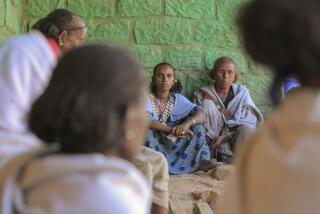Famine Help
- Share via
I read with deep interest the article “Hoping to Leave the Famine Rut” by Michael Hiltzik (Oct. 23). His observations about the importance of encouraging self-sufficiency in Ethiopia rather than dependence echoed my feelings after seeing the beleaguered country in April of 1988. I visited an eastern province called Harrarghe with CARE, the international relief and development organization. What I saw there was both harrowing and encouraging.
In 1984 and 1985 the horrible famine years, CARE was rushing food to 600,000 men, women and children threatened by starvation in Harrarghe and two other regions. Today in Harrarghe, CARE has dismantled all of its food distribution centers because most of those who were standing in food lines four years ago are now farming. CARE is using the food-for-work approach to support farmers in environmental projects that will safeguard their land against the next famine.
Since 1985 the people of Harrarghe and CARE have planted about 8 million trees, filled in hundreds of gullies, terraced miles of hillsides, dug water catchments and much more. Workers receive food in exchange for their efforts. Their handiwork, by conserving water and topsoil, will help all the local residents survive the next drought.
Through programs created after World War II, CARE receives free food commodities from the U.S. government. CARE uses that food and private donations in such a way that $1 from an American donor creates $11 worth of help overseas. Best of all, the help is the kind that, as Hiltzik says, gets the poor out of “the famine rut.” I thank him for an accurate and ultimately hopeful look at hunger in Ethiopia.
LLOYD BRIDGES
Beverly Hills
More to Read
Sign up for Essential California
The most important California stories and recommendations in your inbox every morning.
You may occasionally receive promotional content from the Los Angeles Times.













